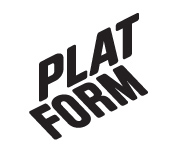When an artist works with other people in co-creation of a public outcome, what kind of challenges and possibilities does participatory methodologies and documentary photography offer? Is it possible to find a new context in the tension between the two modes of process and outcome, when photographic subjects also become participants and co-creators of artistic work? How does the creative process influence the photographic activity and vice versa? How can one use the social and practical situations that arise as a result of an engaging strategy, to invent art and to explore the social interaction behind an image?
How may one create a space for aesthetics decisions and an artistic point of view while decentralizing authorship? Who is allowed to make a visual representation in a public space? [1] How can one be usefully engaged with individuals or a community and document it in the work? What kind of subtle, silent and in-built behaviour patterns do photographers use? What do we know about all the decisions a photographer constantly makes and how does one move as a photographer?
All these questions were part of the art project BRIDGING ZIP-CODE 65, which explored the borders between camera-based art, documentary photography in particular, socially engaged art and public art. In this project the artists Maria Nordbäck and Brynhild Bye-Tiller were deliberately alternating between a traditional narrative photographic approach and socially engaged art, blurring the lines between art and documentary. They positioned themselves in the intersection between photography as documentation, photography as representation, photography as a relational tool and photography as activism.
Their main concern was to develop documentary photography as art and to explore its relationship to methods, structures, narration, activism, co-authorship, cooperation, involvement, learning processes, usability and public shaping of projects. BRIDGING ZIP-CODE 65 was a cooperation between the artists Brynhild Bye-Tiller (NO) and Maria Nordbäck (FI). Together they invited immigrants, asylum seekers and refugees in Vaasa to participate in an intensive and intimate photo workshop, which led to two art pieces; a dual photographic exhibition in the Mikola gallery put up by the participants and the artists, and a public display of photography inside a wooden house structure, also built by the participants at the Spring Fair in Vaasa Square.
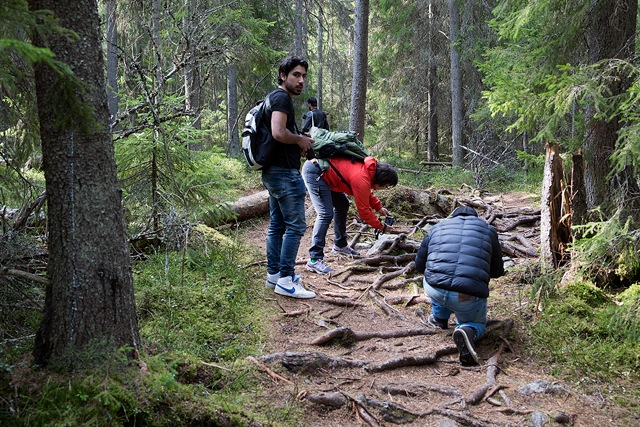
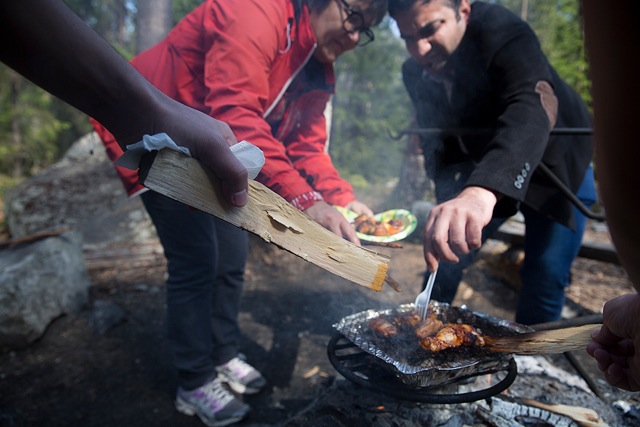
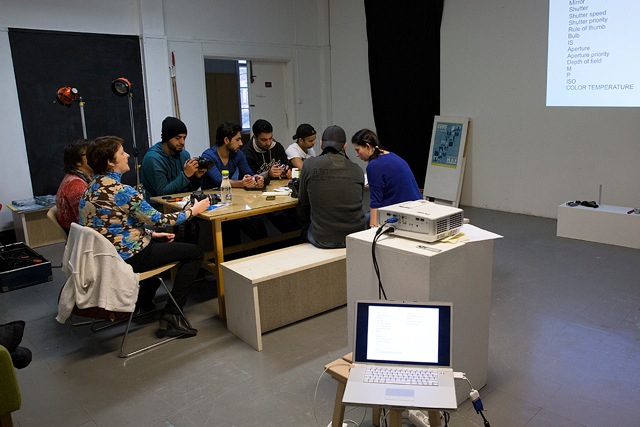
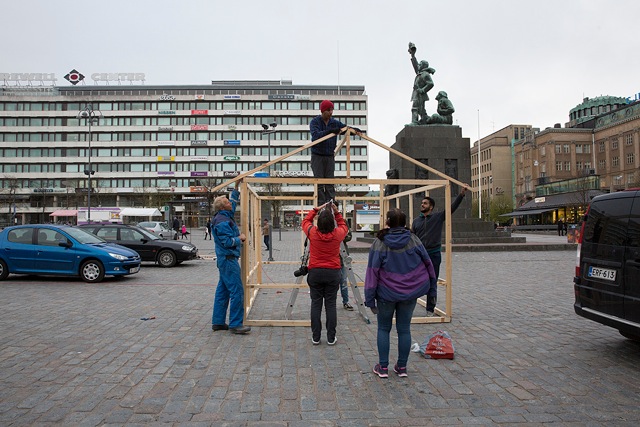
Inside the Mikola gallery Bye-Tiller presented large format colour photographs chronologically displayed from different parts of the project with narratives strongly influenced by the social interaction and involvement. These works were presented alongside several series of photographs from each participant with portraits of Finns and Finnish nature. As part of the project, the public was asked to invite a refugee to their homes. During these visits and other activities several thousands of pictures were taken of which a small part was shown in the Mikola gallery and a substantial number (300) was displayed in public. In a temporary house, three walls made of a transparent plastic material were covered with pictures from the participants. The exhibitions gave them a chance to appear in a public space together with the artists.
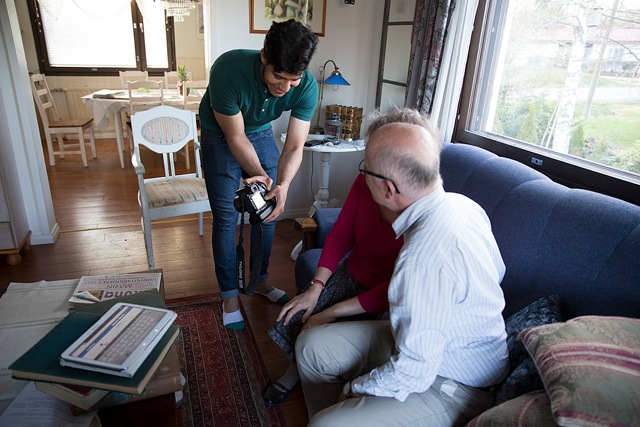
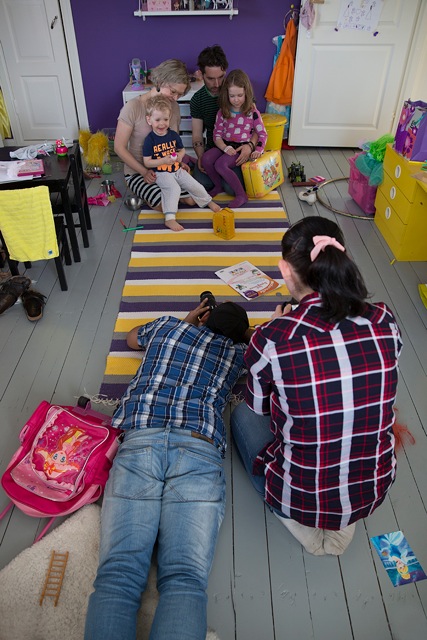
The workshop laid the foundation of the project and the participants got the opportunity to develop their visual language as well as practical and technical skills. Photography became a way to connect with people inside postal code 65 (Vaasa city including Korsholm/ Mustasaari), hence the title, Bridging Zip-Code 65. For the artists, this project offered an opportunity to explore the tension between participatory methodologies and different photographic approaches. BRIDGING ZIP-CODE 65 included two lectures and a one-week extended photo workshop with a number of activities: street photography during the spring festival Vappu and Labor Day, nature photography in Öjens Nature Trail in Sundom, environmental portraits during several home visits in the Vaasa region, editing sessions, producing and setting up two exhibitions, building a house and extensive use of social media.
The participants were Marina Hokkonen (Russia), Anna Pettersson (Belarus), Ali Aljboory (Iraq), Khem Raj Pokharel (Nepal), Zuhair Qasm (Iraq), Ahmed Hakeem (Iraq), Othman Ibrahim (Iraq) and Mohammed Ameen (Iraq). Local partners were MIRA Centre, Welcome Office Vaasa, Vaasa Reception Centre.
Bye-Tiller was residence at Platform and Nordbäck is a member of Platform. The project was part of RECEPTION the 1st triennial of the COMMUNITY arts in Finland. The 1st Triennial of Coummunity Arts, can be found here:
